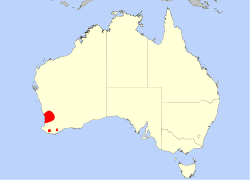This article needs additional citations for verification .(September 2021) |
| Drosera callistos | |
|---|---|
 | |
| Scientific classification | |
| Kingdom: | Plantae |
| Clade: | Tracheophytes |
| Clade: | Angiosperms |
| Clade: | Eudicots |
| Order: | Caryophyllales |
| Family: | Droseraceae |
| Genus: | Drosera |
| Subgenus: | Drosera subg. Bryastrum |
| Section: | Drosera sect. Lamprolepis |
| Species: | D. callistos |
| Binomial name | |
| Drosera callistos | |
Drosera callistos is a species of pygmy sundew from Western Australia. The specific epithet callistos is from the Greek word callistos meaning beautiful. [2]

